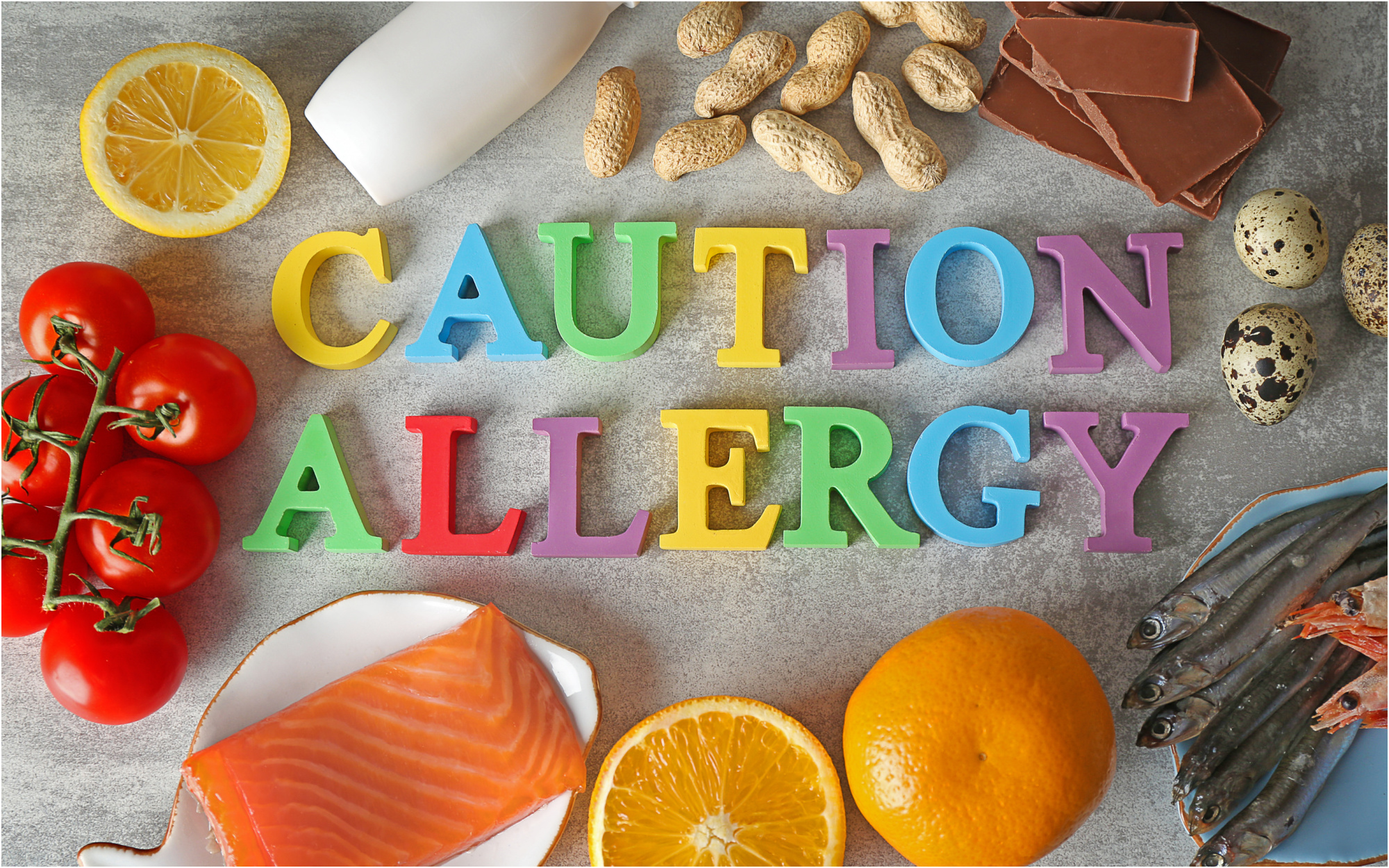Dining out is a relaxing experience for many of us, yet for others, it may induce anxiety or fear due to food allergy. It is estimated about fifty million Americans have an allergy of some kind, affecting around five percent of adults and children. A food allergy occurs when the body’s natural defenses overreact to a particular substance causing the body to recognize the food as an enemy, sending out chemicals to defend against it. While the most common time to develop a food allergy occurs as a baby or younger child; food allergies may develop at any age – even in foods you have eaten for years without reaction. While allergies do tend to run in families, it is impossible to predict whether a child will inherit a parent’s allergy or if siblings will suffer from similar food allergies.
REACTIONS
Food allergy reactions can vary greatly from person to person, be mild or severe, and symptoms may change in the affected individual. For example, the first time you eat shrimp, a reaction occurs with only mild symptoms, but weeks or months later, you eat shrimp again and severe symptoms occur. It’s important to note that for some, it could take a large amount of the food to trigger a reaction, while others may experience a reaction with very small amounts or even inadvertent exposure such as a utensil simply touching the food. Reactions may range from a funny, itchy feeling in the mouth, skin rash or hives, swelling of the tongue, lips, or face, abdominal pain with vomiting/diarrhea, to severe, life-threatening whole-body reactions, which can involve impaired breathing, dramatic drop in blood pressure, and elevated heart rate.
TYPES OF FOODS
While a reaction can occur to any food, there are nine food groups that are associated with almost ninety percent of all food allergies: eggs, dairy, peanuts, tree nuts, fish, shellfish, wheat, soy, and sesame (added as of January 2023). Allergic reactions usually present within minutes up to two hours following ingestion. Of the above groups, allergy to milk, eggs, and peanuts occur most commonly in children, while tree nut, fish, and shellfish allergies are seen more commonly in adults. Many children may outgrow an allergy to milk and eggs, whereas allergies to peanuts and shellfish tend to persist. While avoidance of foods that result in allergic reactions is generally recommended, there are certain cases in which avoidance may not be required. Individuals who only experience oral reactions (the funny, itchy feeling in the mouth) following ingestion of certain uncooked fruits and vegetables may be able to eat cooked versions of the foods. Additionally, individuals with egg and dairy allergies may sometimes be able to eat baked goods containing eggs and milk as the high heat during baking results in chemical changes of the protein which cause the allergy.
DIAGNOSIS
Diagnosis of a food allergy can usually be made with a simple interview by your physician. A true food allergy will usually cause some sort of reaction every time the suspected food is eaten. As mentioned previously, reactions may vary with each exposure in presentation and severity. Your physician may recommend a blood test for certain antibodies that result in food allergies. This testing can be complicated to interpret as a negative result is helpful to rule-out a food allergy to certain foods, but positive results may not always indicate a true food allergy. Referral to a physician who specializes in Allergy-Immunology may be necessary for skin-prick testing, the gold standard in allergy diagnosis. This testing involves injection of potential food allergens into the skin and observing for a reaction. Additionally, suspected foods may be ingested by the individual in a controlled environment such as the physician’s office or a food challenge center where medical emergencies can be managed if they occur.
ATYPICAL ALLERGIES
While most food allergen reactions occur within two hours of ingestion, there are two atypical allergies which are becoming more frequent. One is alpha-gal allergy, a potentially severe allergic reaction to a carbohydrate molecule found in red meat. The molecule is found in most beef, lamb, pork, and venison, etc. Unlike common food allergies, alpha-gal reactions may be delayed, occurring up to eight hours following ingestion. Like other food allergies, reactions may include hives and itching, lip and facial swelling, abdominal pain with vomiting/diarrhea, and shortness of breath with cough/wheezing. Reactions may progress to life-threatening anaphylaxis. This is particularly worrisome as patients may not experience a reaction until several hours after a meal, perhaps during sleep. Interestingly, alpha-gal allergy has been associated with being bitten by the Lone Star tick. The tick carries the alpha-gal molecule in its saliva resulting in sensitivity of the individual after a bite. Individuals with a history of frequent tick bites are more likely to develop this specific allergy. Prevention involves avoidance and prompt removal of the tick.
The second delayed allergic food reaction is Food Protein-Induced Enterocolitis Syndrome (FPIES). This allergy is associated with severe gastrointestinal symptoms which occur between two to six hours after ingesting milk, soy, and certain grains. FPIES usually occurs in infants. Symptoms may include severe vomiting and diarrhea which can lead to dehydration. The severe inflammation of the gastrointestinal tract may also lead to blood being present in the stool. Diagnosis may be delayed as this allergy presents like other viral or bacterial infections that may occur in infants. Treatment involves IV fluid rehydration and removal of the offending food from the infant’s diet.
TREATMENT
Overall, avoiding the food or foods that cause the reaction is the mainstay in the management of food allergies. In the event of inadvertent exposure, Benadryl can provide some symptom relief. Severe reactions may require treatment from your physician with epinephrine (EpiPen) or corticosteroids. Some patients may benefit from oral desensitization therapy performed under the supervision of an allergist physician. During therapy, increasing amounts of the offending food are provided over time to build up a tolerance. While quality of life can be affected, merging testing and treatment can greatly reduce the burden and anxiety associated with food allergies. Talk to your physician today if you feel you are experiencing an allergic reaction to food.
Kendall Wagner, M.D. is a regular healthcare contributor to Do South® Magazine.
Chaffee Crossing Clinic
11300 Roberts Boulevard, Fort Smith, Arkansas
479.242.5910
chaffeecrossingclinic.com




